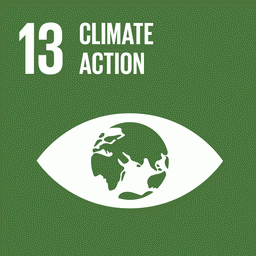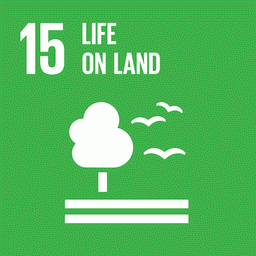As tackling climate change becomes more urgent than ever, the whole world has been raising and discussing alternatives, but one thing is certain: “any solution has to include keeping the Amazon forest standing”, warned Paulo Moutinho, senior researcher at IPAM (Amazon Environmental Research Institute), in a special session of Amazoniar for the Ecology Day, last Tuesday (14/09), under the theme Amazon forest: what does it have to do with your future. Organized by the Portuguese Society of Ecology and the European Federation of Ecology, the Ecology Day aims to bring ecology closer to society.
“In addition to enabling rains, cooling the land and being a natural irrigation system, the Amazon forest stores a large amount of carbon. If we lose this territory to deforestation or other irregular uses, 100 billion tons of carbon could be released into the atmosphere, which is the equivalent to a decade of global emissions and would certainly aggravate global climate change”, he said, explaining that the forest annually absorbs 15% of all carbon emissions through its vegetation.
According to Moutinho, the Amazon concentrates between 10% and 20% of the global plant diversity (around 30,000 species) and has between 30 and 300 species of plants per hectare – for comparison purposes, North America has between 4 and 25 species per hectare. Cultural diversity is another great wealth of the territory: the Amazon is home to indigenous communities, quilombolas and smallholder farmers, who contribute significantly to local preservation.
“The Amazon also plays a key role in keeping the weather humid due to the forest transpiration, which generates the so-called “flying rivers”: each tree emits between 300 to 500 liters of water a day, totaling 20 billion liters of water evaporated daily. Known by scientists as the “green ocean” due to its ability to carry moisture from evaporation from the ocean into the continent, starting from the Andes Mountains to the south of North America”, highlighted Moutinho.
As a result of the constant threat of illegal deforestation and land grabbing, fires in the Amazon have been increasing every year: in 2020, 46% of the heat zones were identified in the Amazon, according to the National Institute for Space Research (Inpe), corresponding to 28% of the area that was burned between 2000 and 2019.
Watch the special session of Amazoniar for the Ecology Day:
Everyone can and must contribute to the conservation of the Amazon forest
According to Moutinho, the current scenario limits the capacity for converting forests to other uses. During the event, Moutinho stated that 80% of the territory still is covered by intact forests. By using abandoned areas, he says that it would be possible to increase agricultural and livestock productivity without deforestation. “This possibility exists in Brazil and the country needs everyone’s contribution to make it happen. Through cooperation, between 2005 and 2012, Brazilians managed to reduce deforestation by 80% and doubled agricultural and meat production without cutting down forests. However, in the last few years we have accelerated deforestation”, he warned.
Among the solutions he mentioned are strengthening leadership and governance to protect the rights of indigenous peoples and protected areas; increasing productivity and contribution to the conservation of agriculture and livestock sectors; providing smallholder farmers with technical support and business opportunities; and engaging the government to protect public forests. “There are 60 million hectares (almost the size of France) of public forests that still need to be destined for protection or as indigenous lands. A law passed in Congress in 2016 says that these forest areas must be protected, prohibiting their deforestation and use as private property”, he explained.
Finally, Moutinho shared how society can contribute to the conservation of the Amazon forest. It includes monitoring the origin of products from the region so that only those that are not related to deforestation are consumed, identifying producers who work towards forest conservation and thus strengthen production without deforestation. “Perhaps the Amazon is the last place in the world capable of producing the long-awaited sustainable development on a large scale: it has conditions to produce, increase production and, at the same time, maintain the natural functions of the forest I mentioned before”, he concluded.
Join the next events of Amazoniar
Amazoniar is an initiative by IPAM to promote a global dialogue on the Amazon forest and how it influences the relations between Brazil and the world. Register now for the next events:
Sep 23rd at 10 am (Brasília) – Listen to this story: The wealth of indigenous literature and legends
Oct 7th at 10 am (Brasília) – Indigenous voices: Traditional and current songs and how they mix
Oct 21st at 10 am (Brasília) – Indigenous perspective: Traditional peoples through the lens of photography and audiovisual
Photo contest Amazoniar
As part of the third cycle of Amazoniar, IPAM launched a photo contest under the theme “Amazon for the Planet”. It is open to all, regardless of age and nationality, and it aims to encourage the record of realities in the Amazon, as well as the cultural and artistic production in the region.
A panel of judges will select 20 photographs in total. The winners will have their photos exhibited, in digital format or via projection, in Glasgow, Scotland, during the Conference of the Parties (COP 26) of the UN Framework Convention on Climate Change, and at the Museu do Amanhã, in Rio de Janeiro, next to an exhibition scheduled to open at the end of the year. Check out the rules and take part!
To receive news about Amazoniar, sign up for our newsletter.

